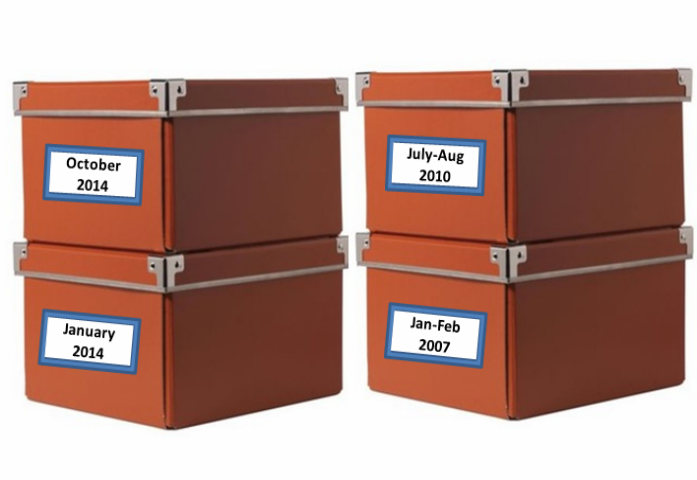Store Backup and Archive Data the Same Way You Store Your Clothes
Part One
I am not the first one to say that data is growing exponentially and is getting difficult – and costly! – to manage. In this series, I am going to discuss how to best manage backup and archive data and overcome the challenges by utilizing the tools available to companies at this time.
Let’s sum up the difference between backup and archive in two sentences so we can get to what I really want to talk about. The short answer is backup is for restoration and archive is to pass audits, stay compliant, and retrieve information for litigation. Oh yeah, occasionally you may want to recover a version from years past. There you go – that’s the difference. Pretty simple.
The more difficult follow up question is: How do I know which medium to use and how do things like cost, efficiency,and time for recovery factor into choosing a medium? In other words, how do I manage it all properly?
The good thing is that since backup and archive aren’t the same, we don’t have to treat the data or store it all the same way. Companies have the tools available to treat data from 8 years ago in a different way than they do with data from yesterday. They can do this by taking advantage of the multiple methods for storing backup and archive data – disk, virtual tape, and physical tape. All of these methods, of course, have varying attributes, and subsequently benefits and downfalls.
You can reap the benefits of each method by storing your backup and archives on each medium based on the value of the backup and archive at that period of time. As the value of the data changes, the medium in which you are storing it on changes as well. Therefore, in order to effectively manage all of your data, the medium you are storing data on should always be directly proportional to the value of the data.
People get flustered when dealing with assets that are intangible. Therefore, the best way to think about your data is by thinking about something tangible. Let’s talk about something that we all have issues organizing — our clothes. Organizing data on different media according to their value is no different than organizing your clothes according to how often you wear them.
Let’s step into my closet – I have a lot of clothes! I can’t fit all my clothes in my closet. That’s fine because I don’t need immediate access to every article of clothing I own. So, here’s the question – “How do I organize my clothes so that I have immediate access to the clothes I wear all the time (backups), clothes that I wear sometimes, like for formal events (earlier backups), and clothes that I may need to wear if I put on a couple of pounds, aka the “Fat Clothes” (archive). C’mon, you know you have them, too ☺. Well, I do what any logical person would do. I organize and categorize them accordingly.
For this example, I am going to organize my clothes in three general categories:
Category A: Clothes I wear daily or often enough that I need them readily available
Category B: Clothes that I need somewhat accessible for the formal events
Category C: Fat Clothes
And, just like any logical person would, I then go and store my clothes based on its category of importance. I put my Category A clothes in my closet in my room because I need to be able to retrieve them easily. I can’t afford to be running around in the morning looking for pants, I need them right in front of me. Category B clothes go down the hall because it is likely I will need to retrieve them at some point. However, they don’t need to be as accessible as my everyday clothes. I can afford to take the time to walk down the hall. Category C clothes go in the attic. I can’t throw them away because I might need them someday. I hope I don’t, but I know I will. (Thanksgiving and Christmas are always good for a couple of pounds.)
Just like how the value of data may decrease over time, so might the perceived value of my clothes. I might find clothes that I used to wear daily, that I really don’t wear that often anymore. As I buy new clothes, I might move those rarely worn clothes taking up space in my closet to the closet down the hall. And that’s the point. You should do the same with backup and archive data. Over time, data that you don’t need to retrieve as often or as quickly, you can move to a different, less costly, medium. Remember, the value of the data should be proportional to the medium that it is placed upon.
You can continue this analogy in the sense of organizing your clothes by type, color, size, etc. and relate it to setting business rules for each department, but I think you get the point. Organizing your clothes based on how accessible you need them to be at a given time , is just like organizing your backup and archive data utilizing different storage methods based on how valuable the data is to your company at a given time. With data growing, costs rising, expectations higher and budgets lower, companies can no longer afford to store data on a more expensive medium than it is worth.
In the next part of this series, we will dive deeper into the different storage methods – disk, virtual tape, and physical tape – so you can utilize them to the best bang for your buck. Stay tuned! In the meantime, visit our website to learn more about backup tape management.

